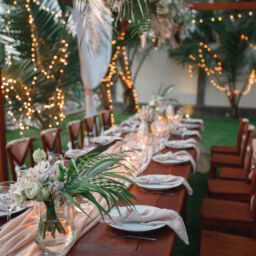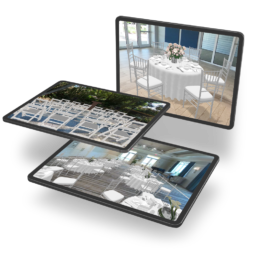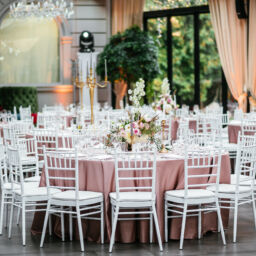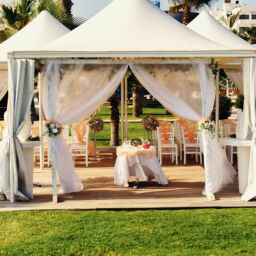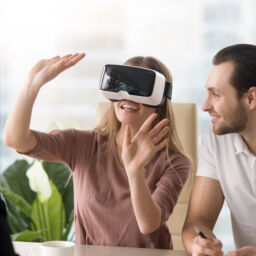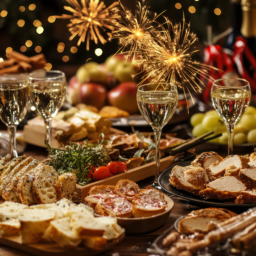Introduction
Lighting is often one of the last elements considered in event planning—but it should be one of the first. When used intentionally, lighting becomes more than just ambiance—it becomes a strategic tool to control mood, guide flow, and shape guest experiences.
As technology advances, we’re moving from static setups to adaptive lighting design—systems that adjust in real-time to enhance every phase of an event, from ceremony to celebration, keynote to cocktail hour.
Whether you’re planning a wedding, corporate gala, or immersive art installation, the right lighting choices can make the difference between an event that’s forgettable and one that feels unforgettable. Let’s explore how lighting influences space, energy, and engagement—and how tools like Placez can help you visualize and optimize your lighting design before setup even begins.
The Psychology of Lighting in Event Environments
Lighting doesn’t just illuminate a space—it transforms it. Research shows that light affects everything from mood to movement, making it one of the most influential design tools in an event planner’s toolkit.
Color Temperature Sets the Tone
• Warm lighting (yellow/golden) creates intimacy, relaxation, and comfort—perfect for receptions, lounges, and dining areas.
• Cool lighting (blue/white) energizes, sharpens focus, and stimulates alertness—ideal for keynotes, galleries, and product demos.
Brightness Guides Behavior
• Low lighting promotes mingling, slower movement, and intimate conversation.
• Bright lighting keeps guests alert, encourages attentiveness, and supports high-energy interactions.
Lighting Influences Perception
Lighting can make a space feel larger or smaller, faster or slower, more intimate or more dynamic—depending on how it’s positioned, layered, and timed.
Lighting for Different Event Types
1. Corporate Events
• Start with crisp, focused lighting for presentations or panels.
• Transition to warmer, softer tones for breakout sessions or networking.
• Use color accents to reinforce branding or signal session types.
2. Weddings & Social Events
• Ceremony: Use soft uplighting or candlelight warmth for a romantic feel.
• Cocktail Hour: Introduce glow zones that guide guests to drinks and apps.
• Reception: Dynamic lighting scenes that shift with the music and energy on the dance floor.
3. Exhibits & Experiences
• Use spotlights or directional lights to highlight installations or products.
• Create flow pathways using lit archways or soft lighting cues.
• Use interactive lighting that changes as guests move or interact.
Lighting should mirror the energy of each moment—elevating transitions, spotlighting focal points, and encouraging guests to move and engage.
Using Lighting to Influence Guest Flow
1. Define Entry and Exit Points
✔ Lighted paths, arches, or downlighting can subtly guide guests where you want them to go.
✔ Dim surrounding areas to focus attention on entrances, check-ins, or stages.
2. Highlight Zones with Purpose
✔ Use brighter pools of light to draw guests toward the bar, photo area, or seating sections.
✔ Introduce motion-triggered lighting for added interaction or VIP moments.
3. Manage Congestion
✔ Adjust lighting mid-event to dim crowded zones, signaling guests to explore other areas.
✔ Create pop-up experiences by spotlighting new food stations, entertainment acts, or activations.
Lighting helps planners subtly shape the journey of an event without constant direction or signage.
The Rise of Adaptive Lighting Technologies
1. DMX-Controlled Scenes
✔ Pre-program a series of lighting scenes to match the timeline of your event.
✔ Automatically fade between lighting moods—from cocktail hour calm to dance floor drama.
2. Sensor-Based or Interactive Lighting
✔ Use motion, sound, or app-based triggers to adjust lighting based on crowd behavior.
✔ Great for immersive brand activations, galas, or tech-forward events.
3. Eco-Friendly Innovation
✔ LED lighting systems offer energy efficiency and customization.
✔ Adaptive dimming reduces power consumption, aligning with sustainable event goals.
Smart lighting brings new levels of creativity, control, and sustainability without requiring a full production team on-site.
Visualizing Lighting Design with Placez
1. Light Zone Planning
✔ Use Placez to designate lighting areas and simulate how light will influence guest perception.
✔ Plan entry glow, stage washes, accent lighting, and flow zones in a visual floor plan.
2. Real-Time Adjustments
✔ As your layout evolves, you can adjust lighting placements in real time to match new floor plans.
✔ Identify potential shadows or overlit zones before setup day.
3. Communicate Lighting Intent Clearly
✔ Share visually annotated plans with your lighting team, AV partners, or decorators.
✔ Eliminate miscommunication and ensure cohesive execution with everyone on the same page.
With Placez, lighting becomes a part of your event strategy—not just a finishing touch.
Conclusion
Lighting isn’t just about visibility—it’s about emotion, movement, atmosphere, and memory. Adaptive lighting gives planners the power to set the tone, guide the crowd, and tell a visual story that unfolds moment by moment.
Whether you’re producing a tech conference, an intimate wedding, or a high-impact product launch, integrating smart, adaptive lighting into your event design can completely transform how guests experience your space.
With tools like Placez, you can make lighting decisions early, visualize them clearly, and execute them with precision—making every moment feel just right.
Frequently Asked Questions (FAQ)
1. What is adaptive lighting in event design?
Adaptive lighting refers to lighting systems that adjust in real-time—changing color, brightness, or direction based on the event’s needs, timeline, or guest interaction.
2. How does lighting impact guest behavior at events?
Lighting affects how guests move, engage, and feel in a space. Brighter areas draw attention and energy, while dim zones encourage intimacy or retreat. Strategic lighting helps shape the flow and tone of the event.
3. Can lighting really influence the success of an event?
Absolutely. Adequate lighting can enhance mood, improve photo ops, increase engagement, and help direct crowd flow. It plays a crucial role in an event’s emotional and functional success.
4. What tools can help me plan lighting design in advance?
Placez allows planners and venue teams to visualize lighting zones, adjust them in real time, and coordinate with vendors—making it easier to deliver impactful lighting experiences.
5. Is adaptive lighting expensive to implement?
Costs vary, but thanks to LED systems, wireless tech, and programmable controllers, adaptive lighting has become more accessible and energy efficient than ever—especially when planned well in advance.

